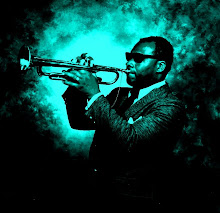
Spots Where Cervantes Has Worked As a trumpeter in wither his settee or jazz quartette, as well as a cocktail (happy-Hour) pianist, Federico has worked in such places as:The Blue Note in Chicago; Dave Quarim's Jazz Cellar in Vancouver, Canada; Studio and The Sheraton Hotel, and the Broadway Inn in Portland, Oregon; The Claremont Hotel and The Stew Den in Berkeley, California; The Broadway Club in Sacramento, California; The Ramada Inn and the Tidelands Hotel in Tucson, Arizona; Club Digger, The Coral Room in Los Angeles; Georgia Lee's Caprice Club in El Monte; Shapiro's Renaissance Club in Hollywood;The New Orleans Restaurant, Mister Majour's Club, Shirley's in Oakland; Bop City, The Mark-Hopkins Hotel, Station "J", The Black Hawk, The Washington Square Bar and Grill, Club Roland's Homer's Afrika Room, The Golden Grommet, Leola Kings' Blue Mirror, the Both And, Haight Levels, Yvonne's Dotty's, The Jazz Work-Shop, Ann's Four-Forty in San Francisco; Trois Colours in Oakland; The Serenader, The Fifth Amendment in Oakland; The Latin Quarters, Cesar's in San Francisco; The Air-Port Plaza in Cupertino; Café Jazz in Cupertino; Garden City in San Jose, California; Cote D'Azur in Atherton, California; Sonny Buckston's Milestones Club in San Francisco; Sherry's Lounge in Hollywood; Charlie Puzzo's Penthouse Club in Seattle, Washington; The whiskey River, Cicero's Club, Hacienda inn, Club Seven Fifteen in Reno, Nevada; The Sticky Wicket in Santa Cruz, California; The Alaska Lounge in San Francisco; California Colleges and Universities during a fourteen day circuit (San Diego, Pasadena, Santa Barbara, Bakersfield, Fresno, San Jose, Sacramento and San Francisco)
Has Worked With Such People As:
Ernestine Anderson, Anita O'Day, Billie Holiday, Al Hibbler, Blue Mitchell, Erik Dolphy, Teddy Edwards, Art Pepper, Erroll Grant, Roland Rosan Kirk, Herb Ellis, Terry Gibbs, Vernell Fournier, and Cat Anderson Double-Billings With Such As:The Oscar Peterson Trio, Errol Bostic, Andre Previn, and The Four Freshman, and Joe Henderson.







